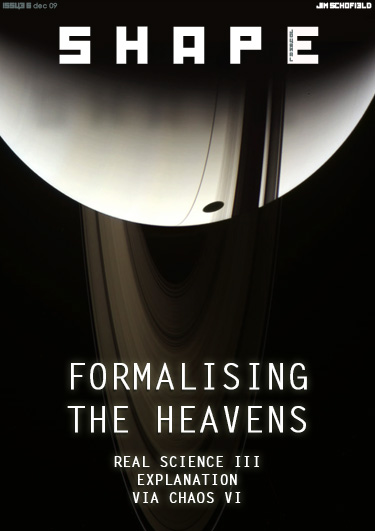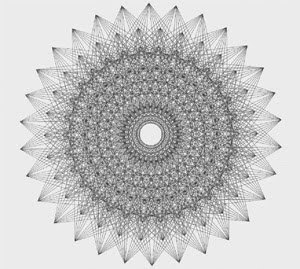
15 December, 2009
09 December, 2009
Eureka! It's Populist Science

"...On reading the current issue [Eureka Magazine, The Times, Nov 5 2009] from cover to cover, I was surprised to find that really nothing new was presented there at all. It reminded me of New Scientist, but whereas that journal is aimed at “scientists” (supposedly), this one is certainly aimed at the “interested layman” in mind instead. And one of the characteristics of such disseminations is that they are totally subservient to the “experts”.
No longer do we have hostile antagonisms by arts-types and other non-believers, but in the new attitude of embracing Science in all its current glory, all the participants merely swell the ranks of the consensus merchants, who “wonder” at the might and power of Big Science as propagated by its producers. This removes that absolutely vital criticism which Science has always needed to continue to progress, and which is now, more than ever absolutely essential, as its ageing philosophy and consequent methodology becomes increasingly inadequate to cope with the major unanswered questions that are daily arriving at the top of every agenda..."
Labels:
Crisis in Physics,
Education,
Eureka,
Large Hadron Collider,
LHC,
New Scientist
The Fruits of Asymmetry

Tessellation utilising re-entrant polygons
(in this case using a singly re-entrant asymmetric hexagon - or "L tile")
(in this case using a singly re-entrant asymmetric hexagon - or "L tile")
"...What was evident to me was that the essential component in these formal investigations was Symmetry! While my colleagues in Physics were totally wedded to complete maximal Symmetry (and indeed Super Symmetry), I was finding that instead of the limited numbers of tilings and crystal forms that were available to them, I was finding (in 2D at least) a seeming infinite complexity of Forms. With maximally symmetric units, these all funnelled down into a minimal set, but with re-entrant forms (the first deviation from maximal symmetry), and various regular asymmetries, the possibilities were vastly increased.
Indeed, from monolithic tilings (using a single basic unit in a single way) there occurred a wide range of hierarchical forms, which could be different or mathematically similar at each succeeding level."
To read the rest of this paper, click here
Labels:
asymmetry,
Design,
Diagram,
form,
Mathematics,
symmetry,
Tessalation,
Tessellation
Diagrams on the Science of Music
Subscribe to:
Posts (Atom)



